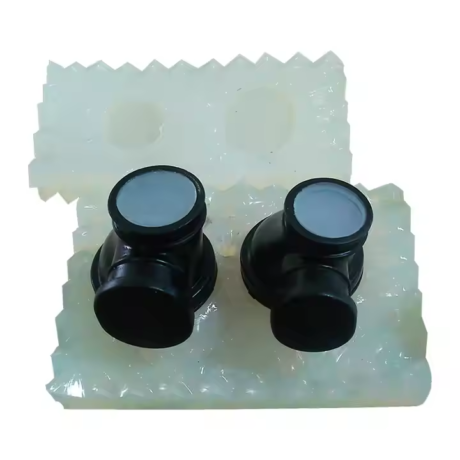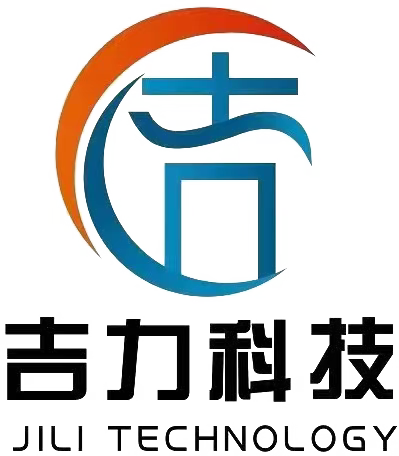CNC Hardware Customization Case: Custom Lens Holder for Optical Instruments
1. Project Background
In the field of optical instruments, the lens holder, as a key component connecting the lens and the main body of the instrument, its precision, stability and adaptability directly affect the imaging quality and overall performance of the optical instrument. “Mingrui Optical Technology Co., Ltd.” is committed to developing high-end optical measuring instruments. In order to launch a high-precision optical measuring instrument with leading industry level, it needs to customize a batch of high-precision lens holders. The lens holder not only needs to meet the requirements of complex structural design to ensure accurate adaptation to core components such as lenses and instrument bodies, but also needs to have excellent stability and anti-interference performance. At the same time, it should present a concise, regular and technological black metal texture in appearance to enhance the overall grade of the product. Since traditional hardware processing methods are difficult to meet such high precision and special process requirements, Mingrui Optical Technology Co., Ltd. finally chose to cooperate with us in CNC hardware customization after many investigations.
2. Detailed Customer Requirements
(1) Material Requirements
In order to ensure strength, stability and good machinability, customers specify the use of aluminum alloy (6061-T6) as the raw material for the lens holder. 6061-T6 aluminum alloy has high strength and hardness, which can provide reliable support for the lens; It has excellent machinability and is easy to carry out high-precision CNC machining; At the same time, good stability can also ensure that the lens holder maintains the stability of shape and size in different environments, ensuring the measurement accuracy of optical instruments.
(2) Precision Requirements
The dimensional accuracy of the lens holder is the key to ensure the precise cooperation of each component of the optical instrument. Customers require that the dimensional tolerance of each part of the lens holder be strictly controlled within ± 0.01mm. For example, for the inner hole used to install the lens, its diameter and roundness error should be extremely small to ensure the perpendicularity and coaxiality of the lens axis after installation, so as to avoid aberration during imaging; The flatness of the connection surface between the lens holder and the instrument body shall be controlled within 0.005mm to ensure the stability of the overall structure after assembly.
(3) Appearance and Surface Treatment Requirements
In terms of appearance, the surface of the lens holder is required to be as smooth as a mirror, without any burrs, scratches or pits, and the overall appearance is a deep black metal luster, giving people a precise and high-end visual experience. In order to enhance the wear resistance, corrosion resistance and visual effect of the lens holder, the surface treatment process is selected as hard anodic oxidation, and the thickness of the oxide layer shall be controlled between 15 – 20μm, and the color shall be uniform without local color difference.
(4) Structural Complexity Requirements
The structure of the lens holder of the optical instrument is complex, including multiple parts such as lens mounting holes, connection structures with the instrument body, and precision mechanisms for adjusting the lens angle. The lens mounting hole needs to accurately match the shape of the lens, and there are fine thread structures inside for fixing the lens; The connection structure should perfectly match the interface of the instrument body to ensure the firmness and stability of the connection; The adjustment mechanism needs to realize the fine adjustment of the lens angle, and the structural design is precise and complex, which puts forward extremely high requirements for the path planning and precision control of CNC machining.
3. Customization Process and Implementation
(1) Pre-Technical Preparation
- Drawing and Process Analysis: The technical team carefully studied the 3D model, 2D engineering drawings and detailed parameters provided by customers. Aiming at the complex structure, the CNC machining process is planned, including the selection of appropriate cutters (such as small diameter end mills, thread mills, etc.), the setting of machining paths and cutting parameters, etc. Due to the complex structure of the lens holder, simulation machining is also required to predict possible machining difficulties in advance, such as deformation control during deep hole machining and thin-walled machining.
- Tool and Equipment Selection: According to the characteristics and machining accuracy requirements of 6061-T6 aluminum alloy, high-precision cemented carbide cutters are selected to deal with the machining of complex cavities and fine structures. Deploy the company’s high-precision five-axis CNC machining center, and use its multi-axis linkage advantage to realize the one-time clamping machining of complex curved surfaces and structures, reduce clamping errors and ensure machining accuracy.
(2) CNC Machining Process
- Raw Material Pretreatment: The 6061-T6 aluminum alloy raw material is strictly inspected to ensure that its composition meets the standards and there are no defects such as cracks and inclusions. According to the processing requirements, the raw materials are cut into appropriate blank sizes to prepare for subsequent processing.
- Multi-Process CNC Machining
- Rough Machining: The method of large cutting amount is adopted to quickly remove most of the excess material and form the approximate shape of the lens holder. During rough machining, cutting parameters are set reasonably to avoid blank deformation caused by excessive cutting force.
- Semi-Finishing: Further refine the shape of the lens holder, and process the approximate contours of the main mounting holes, connection structures and adjustment mechanisms. At this time, the dimensional accuracy is controlled within ± 0.02mm.
- Finishing: The method of small cutting amount and high rotation speed is adopted to finely machine each part of the lens holder, and the dimensional tolerance is strictly guaranteed within ± 0.01mm, and the surface roughness reaches below Ra0.4μm. During the machining process, the online detection function of the CNC machining center is used to monitor key dimensions in real time to ensure machining accuracy.
- Machining Process Monitoring: Arrange special personnel to monitor the machining process throughout the whole process, and use measuring tools such as micrometers and vernier calipers to sample and test the parts during machining regularly, so as to find and adjust the deviations in the machining process in time to ensure that each machining step meets the precision requirements.
(3) Surface Treatment Process
- Deburring and Cleaning: After CNC machining, the lens holder is comprehensively deburred. The combination of manual hand-held fine sandpaper grinding and special deburring tools is used to carefully remove burrs at the edges, orifices, threads and other parts of the parts to ensure smooth surface. Then ultrasonic cleaning is carried out to thoroughly remove oil, chips and other impurities on the surface, so as to prepare for subsequent hard anodic oxidation treatment.
- Hard Anodic Oxidation Treatment: Put the cleaned lens holder into the hard anodic oxidation tank, and strictly control the process parameters such as concentration, temperature and current density of the tank liquid. During the oxidation process, the growth of the oxide film is monitored in real time, and the process parameters are adjusted to ensure that the thickness of the oxide film is between 15 – 20μm, and uniform and dense. After oxidation, dyeing treatment is carried out to make the lens holder present a uniform black color. Finally, hole sealing treatment is carried out to further improve the wear resistance and corrosion resistance of the oxide film.
(4) Quality Inspection and Acceptance
- Dimension and Precision Inspection: Use high-precision measuring tools such as coordinate measuring machines, micrometers and roundness meters to comprehensively inspect all dimensions of each lens holder, including shape dimensions, mounting hole dimensions, flatness of connection surfaces, etc., to ensure that the tolerance is within ± 0.01mm and the flatness meets the requirements.
- Appearance Inspection: The combination of visual inspection and high-power magnifying glass is used to check whether the surface of the lens holder is smooth, whether there are scratches, whether the oxide film is uniform, whether the color is consistent and other appearance quality problems.
- Performance Test: Carry out performance tests simulating the working environment of optical instruments, including stability test (detecting the dimensional stability and form and position tolerance changes of the lens holder in different temperature and humidity environments) and anti-interference test (detecting the resistance of the lens holder to external vibration and impact), to verify the performance of the lens holder in actual use.
- Assembly Verification: Select some lens holders and carry out actual assembly test with core components such as lenses and instrument bodies provided by customers to check whether the assembly is smooth, whether the cooperation between parts is tight, and whether the lens angle adjustment is flexible and accurate, so as to ensure the normal operation of various functions of the optical instrument.
4. Project Results and Customer Feedback
(1) Project Results
Through this CNC hardware customization, we successfully delivered 200 sets of high-precision optical instrument lens holders to Mingrui Optical Technology Co., Ltd. These lens holders fully meet the strict requirements of customers in terms of material, precision, appearance and structure, and provide key hardware support for the research and development of high-end optical measuring instruments for customers.
(2) Customer Feedback
After receiving the customized lens holder, Mingrui Optical Technology Co., Ltd. quickly completed the assembly and testing of the optical measuring instrument. With its accurate imaging quality, stable performance and exquisite appearance, this optical measuring instrument has performed well in projects in the field of optical measurement and has won high recognition from customers. The R & D manager of the customer said: “The precision and performance of these CNC customized lens holders fully meet our expectations, which has won a significant competitive advantage for our optical measuring instrument products in the market. Thank you very much for your professional service. We hope to continue in-depth cooperation in the future.”
The successful implementation of this project not only shows our professional ability in the field of CNC hardware customization, but also further consolidates our position in the hardware component customization market of optical instruments, and lays a solid foundation for expanding business in more high-end equipment manufacturing fields in the future.

